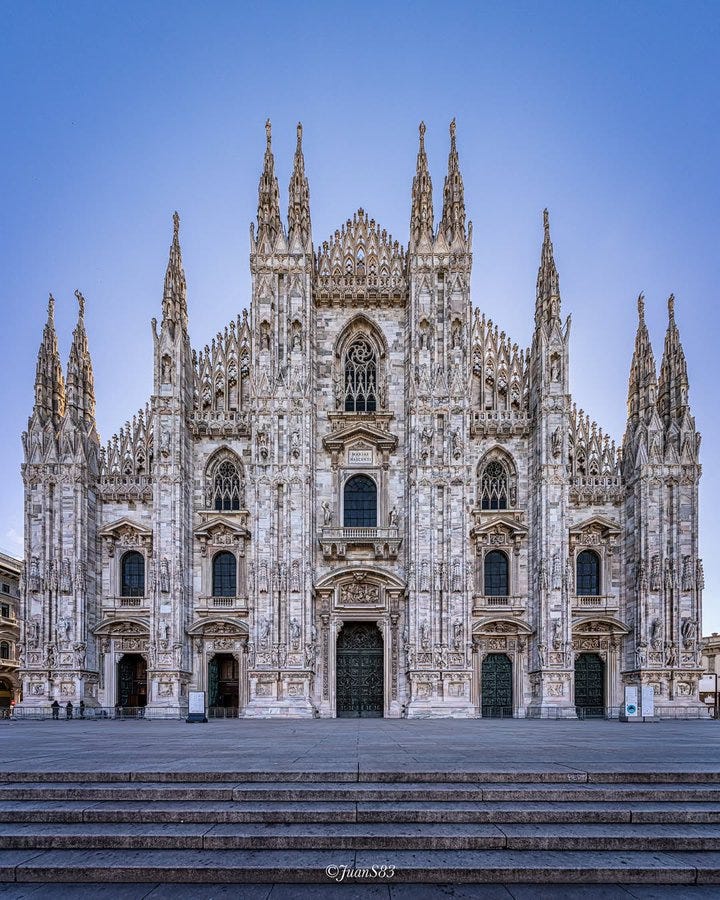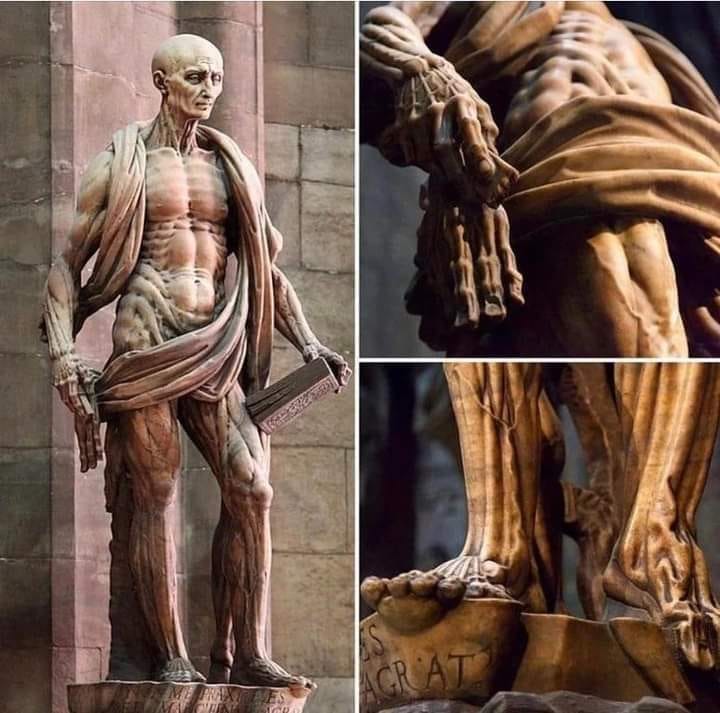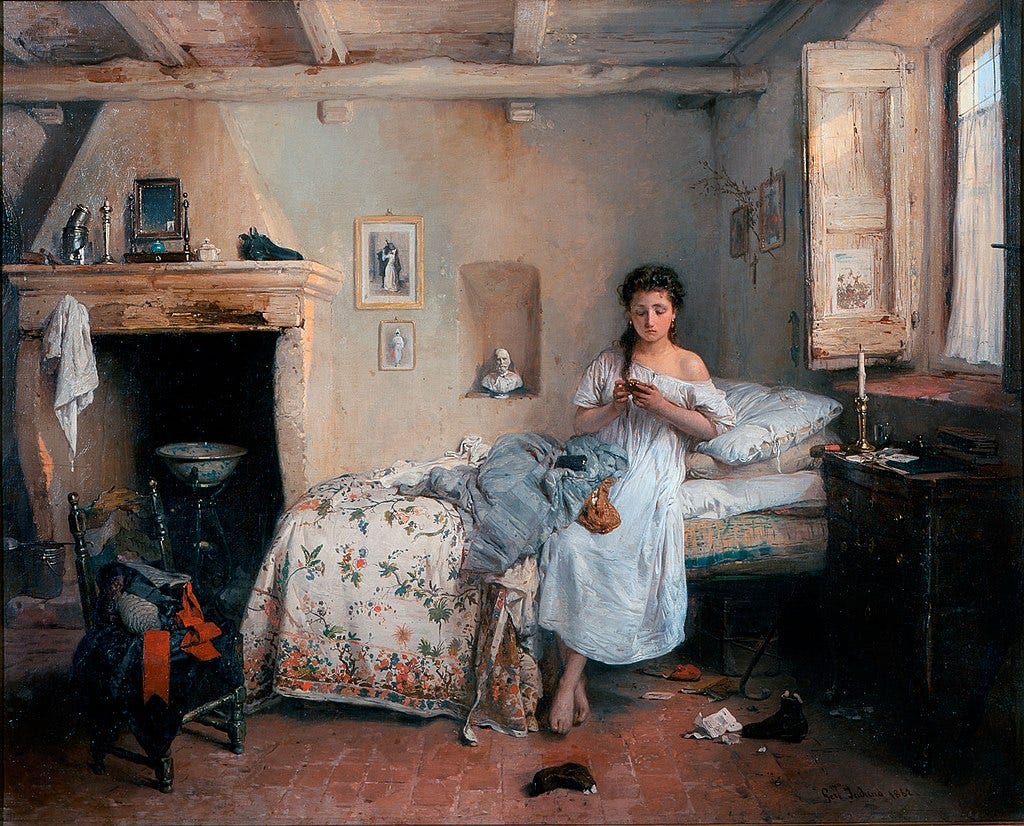How Milan Built Beauty Over 579 Years
Milan is more than a city of style. It’s a place where a cathedral took 579 years to rise, where a forgotten mathematician carved eternity with geometry, and where the streets still hum with beauty.
Table of Contents
Main Section
Premium Section
579 Years of Glory: The Cathedral That Took a Lifetime and Then Some
Built stone by stone over six centuries, Milan Cathedral is not just Italy’s largest church, it’s a powerful example of ambition, faith, rebellion, and the unmatched endurance of human artistry.
By World Scholar
It’s the largest church in Italy and the third largest church in the world, covering 11,000 square meters, or 126,000 feet.
(That’s almost the size of two football fields to put it in perspective).
The Milan Cathedral (Duomo di Milan) is one of the greatest expressions of the culture, architecture, and art in Italy.
Just by a quick glance, you can tell it’s a masterpiece of art from the intricate exterior. Therefore, it must have taken a long time to build, right? 10 years? 50? Maybe even 100?
Well, the answer is not quite what you think.
Here’s everything you need to know about Milan’s history hidden in plain sight…
Construction began in 1386 under Gian Galeazzo Visconti, the Duke of Milan, who sought to establish the city as a European hub that could rival Paris and Rome. Instead of the traditional Lombard Romanesque style, he opted for the new Rayonnant Gothic, emerging from France.
A decision that would make the cathedral stand out from its Italian counterparts.
The entire church was clad in pink-hued Candoglia marble, sourced from quarries near the Ossola valley.
To transport all of this marble, engineers had to create a canal system (known as the Navigli), which would be barges used to float the blocks 100 km to the site. The marble was lifted by treadwheel cranes and then meticulously positioned by hand.
In 1402, the church was almost half complete, but by 1480, progress had stalled due to a lack of funding.
Da Vinci and Bramante also chipped in some ideas to design the central cupola in 1488.
Even though its construction was carefully planned, the Duomo would take a painstaking 579 years to finish.
The most significant step was its façade. Quite possibly it might still have remained unfinished if not for Napoleon Bonaparte.
Ahead of his 1805 coronation (where Napoleon was to be crowned King of Italy), he ordered architect Carlo Pellicani to execute its completion in a Neo-Gothic style. The expenses for such a costly endeavor would be paid by the French treasury and then later reimbursed — though that would never happen.
Believe it or not, even a statue of Napoleon was erected at the top of one of its spires.
You also notice five large bronze doors at the front, which were added 1896-1965. If we zoom in really closely, we can see that they are richly decorated with biblical scenes and saints, focusing on Milanese religious history.
The cathedral has the classic hallmarks of Gothic architecture: most famously its sea of flying buttresses, pointed arches that allowed for weight distribution, and tall stained glass windows. Inside, the roof is supported by 24-meter octagonal pillars.
Something interesting about the Milan Cathedral is how it has an unusual sundial. It’s as simple as a brass line on the floor.
At solar noon, sunlight enters through a small hole 27 meters up on the southern wall and strikes the line at a point marked with zodiac signs and dates. It was installed in 1768 by astronomers from the Brera Observatory so that they could set the city’s official time. As the Earth rotates, the beam moves along the line, allowing for precise solar calendar tracking and solstice alignment.
The cathedral has a Latin cross plan, with five large naves and a projecting transept, reaching its highest point of 108.5 meters at the main spire.
Looking from above, you notice the cathedral’s forest of spires.
Unlike most Gothic cathedrals, the entire rooftop of the Duomo is accessible to the public, so you can see the city from above for yourself.
There are 145 in total.
The tallest, known as the Tiburio, was completed in 1774 and supports the Madonnina — a 4.16-meter copper statue gilded with gold leaf.
Until the 20th century there was a law that prohibited any structures from being built higher than the Madonnina, and today some skyscrapers that exceed the limit place a small replica of the statue at the top out of respect for the tradition.
You could spend a lifetime counting the statues of the Duomo.
There are 3,400 statues in total. That’s more than any other building on Earth.
That’s right. It’s not just the size that takes you aback; it’s the sheer amount of detail you are overwhelmed by when looking at the exterior. There are 3,400 statues, plus another 700 of saints and 135 gargoyles.
One of the most famous sits inside, left of the altar. This is Marco d’Agrate’s 1562 sculpture of San Bartolomeo Scorticato, sculpted during the height of the Counter-Reformation.
It is, by any standard, one of the most unsettling statues in Christian art. According to tradition, Bartholomew was one of the 12 disciples that was flayed alive for preaching Christianity. Artists typically showed him with a knife or modestly wrapped in his flayed skin.
But not Marco d’Agrate.
Beneath the base is a bold inscription, written by the sculptor himself:
"Non me Praxiteles, sed Marcus finxit Agrates"
“"I was not made by Praxiteles but by Marco d'Agrate.”
(Praxiteles was a famed sculptor in Ancient Greece.)
The Milan Cathedral is not short of impressive when it comes to architectural and engineering might.
It stands out.
Not just because of the (epic) Gothic exterior but also the impressive forest of spires, the plethora of statues, and the sheer amount of skill and effort it took to build it. The original designers and builders would never get to see the fruit of their labor, yet today we thank them for it.
Six centuries have passed, but faith and art seem to be intertwined into 1.
Art - The Kiss by Francesco Hayez
They say revolutions begin with banners and bullets but in Italy, one began with a kiss. For one perfect second, two people held each other like the fate of a nation depends on it. Maybe it did.
Francesco Hayez’s Il Bacio (The Kiss) shows a tender moment between two nameless lovers. It’s a quiet expression of patriotism. It was painted in 1859, the year of Italy’s second war for independence. The embrace masks a deeper tension. His red tights, her blue gown, France and Italy locked in alliance, while his dagger and poised foot hint at danger, urgency, and the promise of a last goodbye. This is farewell before bloodshed.
Hayez gave Italy something no flag or anthem could. A visual heartbeat for the Risorgimento. Viewers saw more than romance. They saw courage and rebellion. Behind the couple, a dark corridor looms, hinting at conspiracies, perhaps arrests, perhaps death.
Any thoughts on the shadow in the doorway?
Book Corner
Sail across the serene waters of Lake Maggiore, linger over long dinners in lively trattorias, and stand before Leonardo da Vinci’s masterpieces. This fully updated DK Eyewitness guide to Milan and the Lakes offers expert advice, stunning photography, hand-drawn illustrations, and easy-to-follow itineraries to help you explore with confidence. From must-see sights to the best places to eat, drink, and stay, it’s the perfect travel companion to bring the region to life.
The Man Who Saved a Cathedral with a Triangle
In a world where ambition clashed with ego and faith hung on geometry, one forgotten mathematician drew a triangle that saved Milan Cathedral from architectural collapse and historical oblivion.
By Culture Explorer
You’ve been told that cathedrals were built to glorify God but what if one was also built to prove a mathematical point?
That’s the story behind Milan Cathedral. This wasn’t just another Gothic church, it was the largest in Italy and became a battleground of geometry, pride, and power. Behind its soaring spires and marble lacework lies a story of architects clashing, theories colliding, and a single forgotten name, Gabriele Stornaloco.1 Of a man who might have saved the entire structure from falling into chaos. It’s a reminder that even sacred architecture can be a fight for control.
In 1386, the first stones were laid for what would become Italy’s most ambitious Gothic cathedral. Larger than life, the project pulled in architects and engineers from across Europe. Lombards, Germans, and Frenchmen, each brought their own vision and methods. But that also led to argument amongst them.
The cathedral was meant to be a marvel of symmetry, order, and light. But it wasn’t clear how to achieve that. The walls began rising from a floorplan that looked simple on paper: a grid of squares and rectangles, 16-by-16 braccia for the side aisles and 16-by-32 for the central nave. However, translating that into a vertical structure? That was the hard part.
continued in the premium section…














